Post by Camden Howard, undergraduate in Psychology at Portland State University. Photos and editing contributions by Bill Griesar.

Cam introduces Mac students to a human brain from BioGift
NW Noggin traveled across the Columbia River this week to visit with students and families at “the Mac” – a.k.a., McLoughlin Middle School – with another crowd of eager outreach volunteers!

Mount Hood to the east while crossing the Columbia River towards Vancouver…
The middle school is named for Dr. John McLoughlin, who served as “Chief Factor” (Head) of the Columbia Department of the Hudson’s Bay Company, based at nearby Fort Vancouver, for several decades during the 19th century. McLoughlin is described by the Oregon Historical Society as “one of the most powerful and polarizing people in Oregon history” with, at times, an “ungovernable Violent temper and turbulent disposition…”
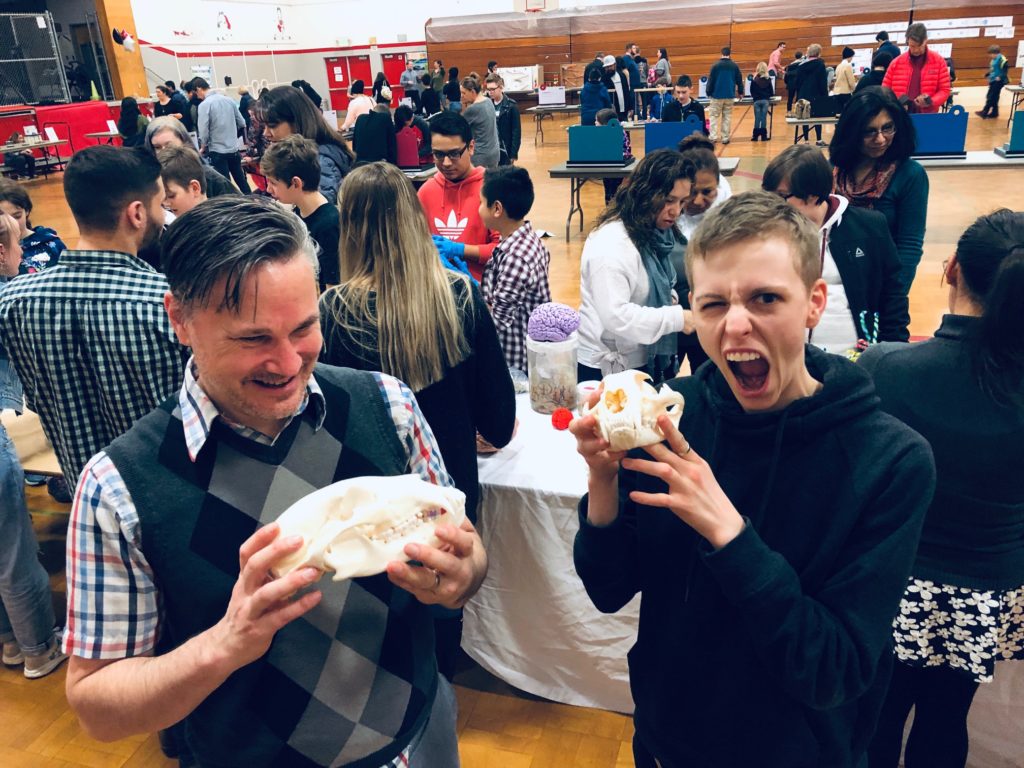
“Adolescence is a tumultuous time, full of changes and transformations.” –M. Arain et al
LEARN MORE: Maturation of the adolescent brain
LEARN MORE: The Oregon Encyclopedia on John McLoughlin (1784-1857)
LEARN MORE: History Link on McLoughlin, John (1784-1857)
LEARN MORE: The Chief Factor’s House @ Fort Vancouver

At McLoughlin Middle School, in the Vancouver Public School District
We welcomed a big contingent from Psychology/Neuroscience at Portland State University, including myself, Jesus Martinez, Isidro Chan, Maverick Grey (an NIH BUILD EXITO scholar), Sydney Duran, Aaron Eisen, Liliana Prychyna, Kelsey Payne, Jason Blume and Darrin Lane!

We were joined by Ashley Navarro from Mount Hood Community College, Veronika Lobova and Nathan Allen from WSUV, and Joey Seuferling, Jeff Leake and Bill Griesar from NW Noggin!

It was Science Night at the Mac – an event clearly needed more than ever these days in Clark County (and Portland), given the unusually large number of parents failing to vaccinate their kids for measles. Measles is one of the most deadly and virulent vaccine-preventable diseases, with significant adverse impacts on the development and health of our bodies – and brains.

There is no evidence of any link between receiving the measles, mumps, and rubella (MMR) vaccine and a subsequent diagnosis of autism.
LEARN MORE: House Bill targets vaccine exemptions
LEARN MORE: Vancouver-area measles: Low vaccination rates made outbreak ‘inevitable’
LEARN MORE: Visual proof of why vaccines do more good than harm (from Science)
LEARN MORE: Autism and measles, mumps, and rubella vaccine: no epidemiological evidence for a causal association
LEARN MORE: Autism Occurrence by MMR Vaccine Status Among US Children With Older Siblings With and Without Autism
LEARN MORE: MMR Vaccine and Autism: Vaccine Nihilism and Postmodern Science
LEARN MORE: Measles virus and associated central nervous system sequelae
LEARN MORE: New Insights into Measles Virus Brain Infections
LEARN MORE: Measles virus in the brain

McLoughlin Middle School opened its doors Thursday night to an array of science booths, including our own popular display of ‘brains and art’…


Scattered across our tables were countless pipe cleaners – and of course, their more evolved form – the pipe cleaner neuron!



LEARN MORE: NW Noggin STEAM Art Projects
We also offered animal brains (and eyeballs!) in jars…


Human brains for touching…

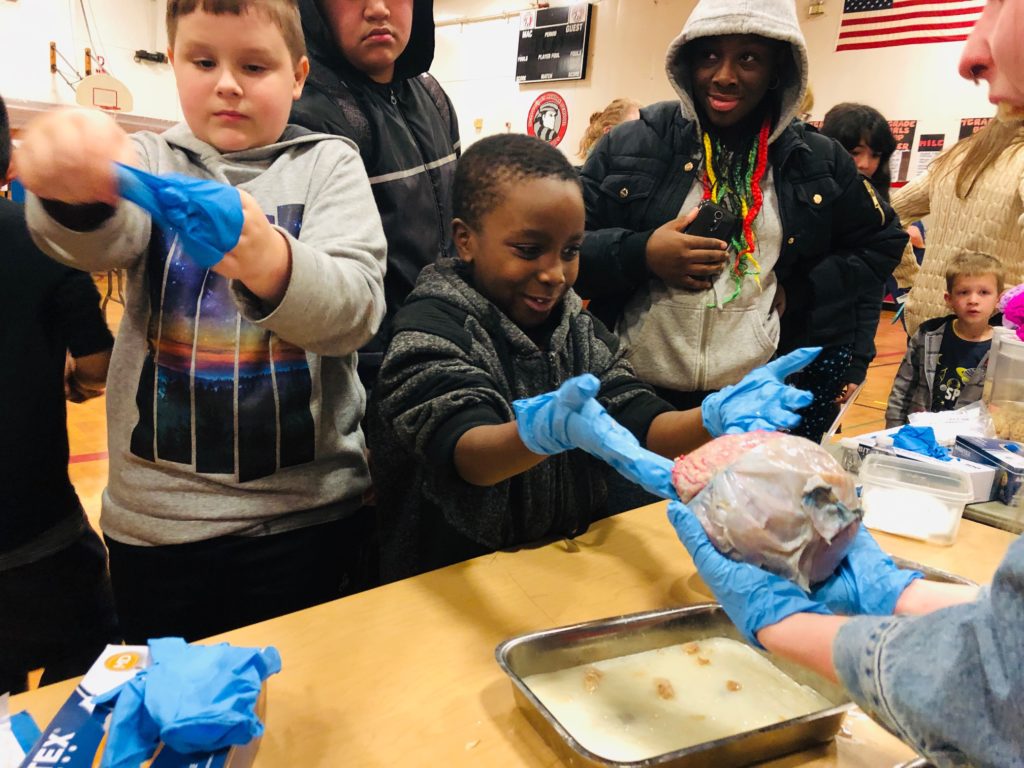
“Can you see disease in the brain? What does Alzheimer’s disease look like?”
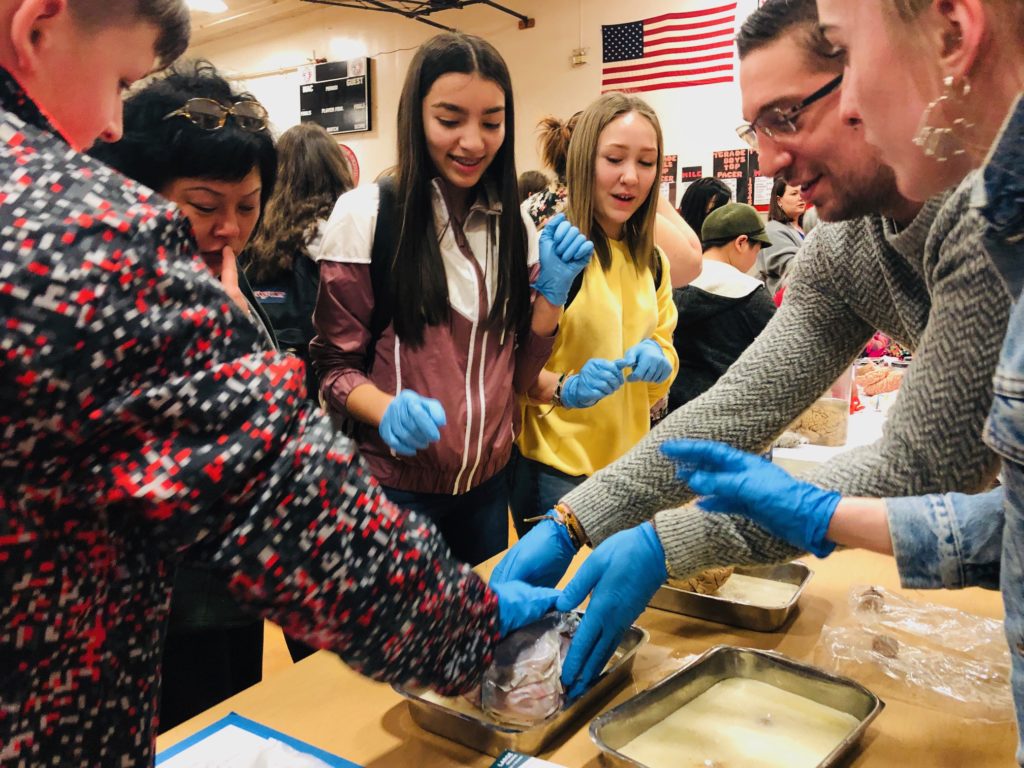

Aaron Eisen, the Outreach Coordinator for the PSU Neuroscience Club, also brought along the very exciting (we might say, depolarizing!) Human to Human Interface from Backyard Brains.

This is a compact Arduino micro-controller circuit board which receives electrical input from electrodes placed over the muscles on one person’s arm. When that person moves their hand, it signals the Arduino, which delivers an electric shock to stimulate the muscles in a second person’s arm..!
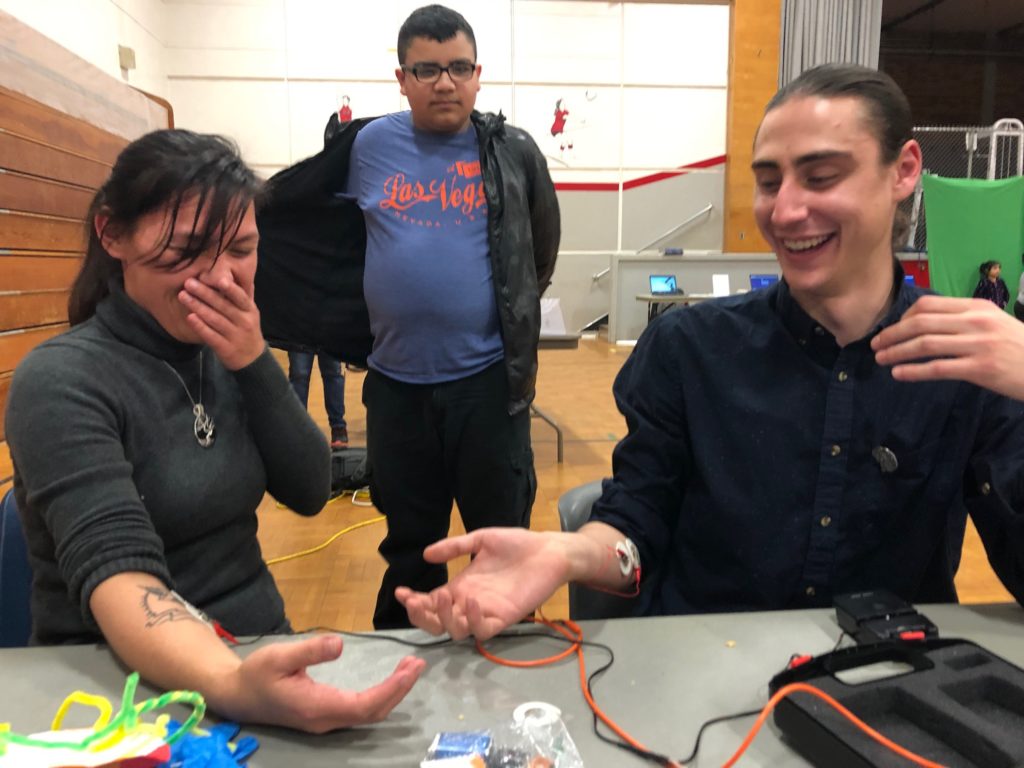

LEARN MORE: Brain Hacking is Electric!
It didn’t take long for the young brains in the room to become fascinated with the brains on the table, and it turns out that for some kids, NW Noggin can even become a compelling quest…

“When you guys came to my school, I was so disappointed that I missed it! I was searching for when you guys might be available again,” revealed Parker Rodriguez, a freshman at Fort Vancouver High School who came early to the Science Fair just to visit our table!
LEARN MORE: Noggin @ Fort Vancouver!
LEARN MORE: What will your students remember in five years?

So many of the McLoughlin students were fascinated by neuroscience and eager to learn more about discoveries and opportunities for research…


Of course, at the brain-holding table, many faces were made as students felt the undeniably odd consistency of formaldehyde-fixed brains. “It was was hard, but not so hard that you couldn’t squish it. Like a thicker gelatin,” one of the students explained, utterly in awe…

The thick, pliable dura mater, one of the three meningeal layers protecting the spinal cord and brain, was of particular interest, with quite a few dubbing it “the brain’s skin.”

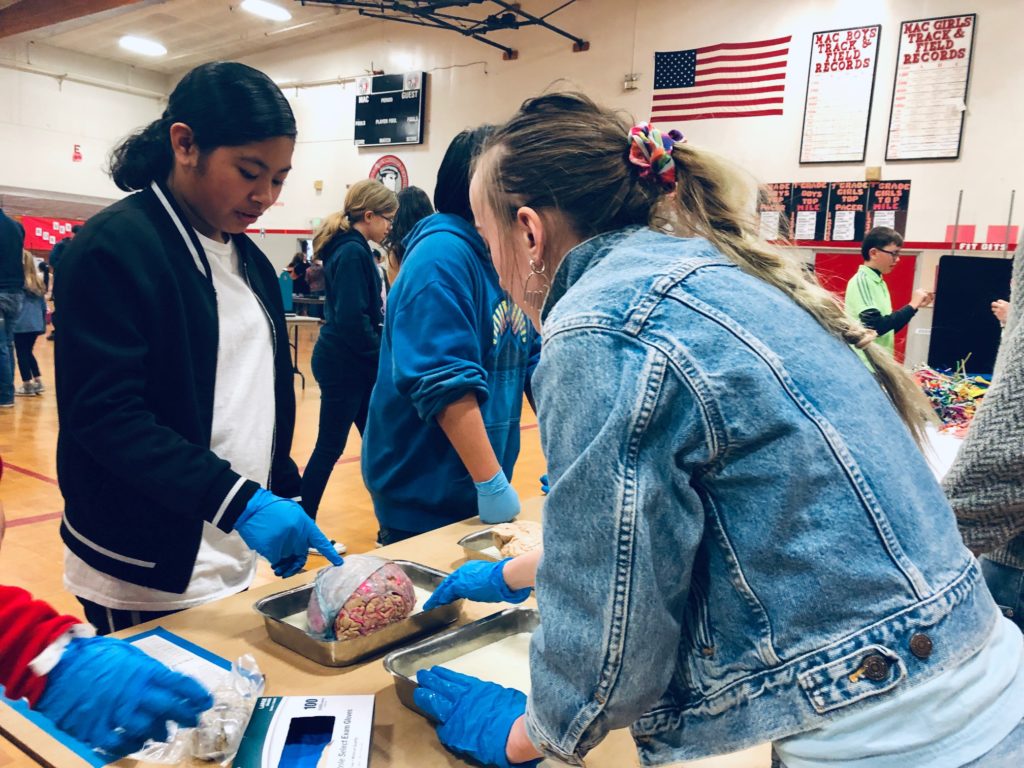
“What‘s that plastic bag on the brain – wait, that’s the ‘dura mater?’ This is inside me?! How do I get to study neuroscience?!”
LEARN MORE: The cranial dura mater: a review of its history, embryology, and anatomy
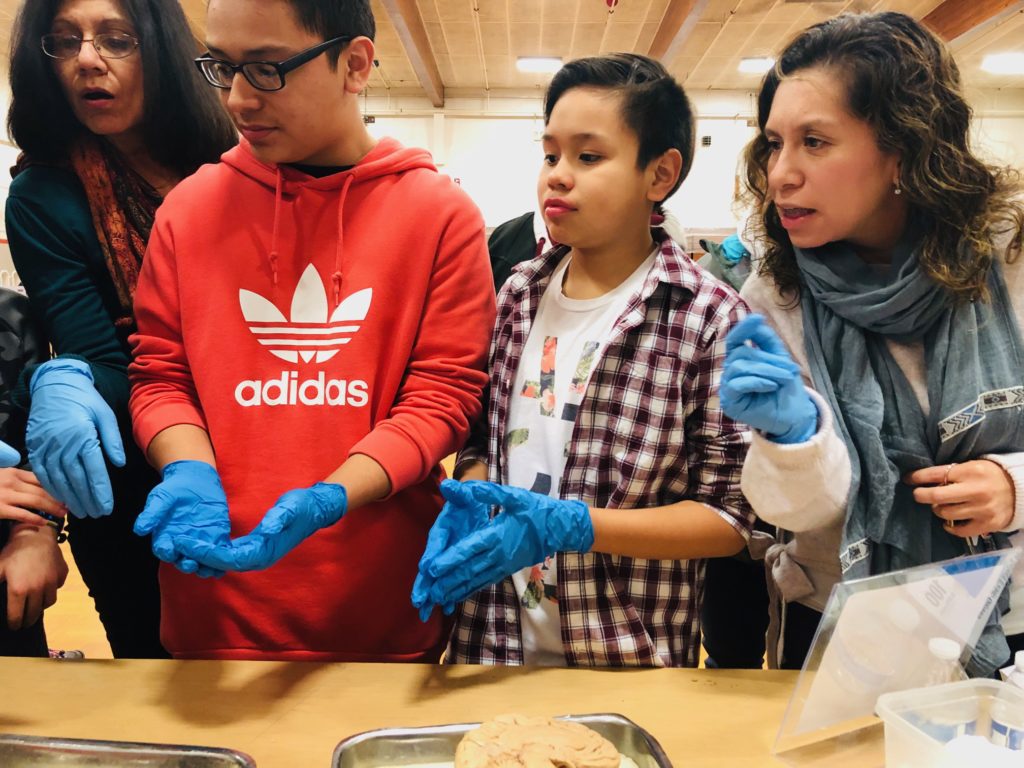
From PSU Noggin volunteer Jason Blume: “What I found most endearing was the fascination for science displayed by the students’ parents. Also, when people learned that our sealed brains (not for touching!) were kept in formaldehyde, some explained that they’d heard smoking cigarettes also creates formaldehyde. They did not want that particular chemical in their lungs!”
LEARN MORE: Tobacco Use Among Middle and High School Students 2011–2015
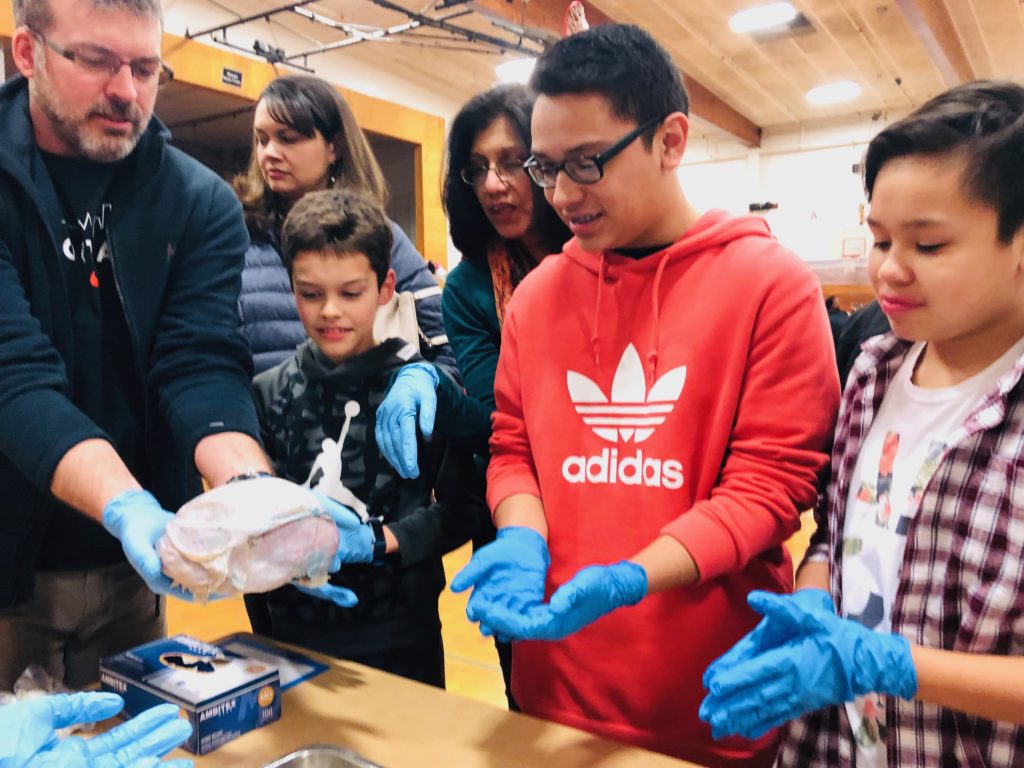

“Tobacco use is the leading cause of preventable disease and death in the United States”
David Peyton at Portland State University has, along with colleagues, recently revealed how e-cigarettes, even at lower heat settings, also generate significant formaldehyde when burning various e-liquids…
LEARN MORE: The truth about formaldehyde in e-cigarettes
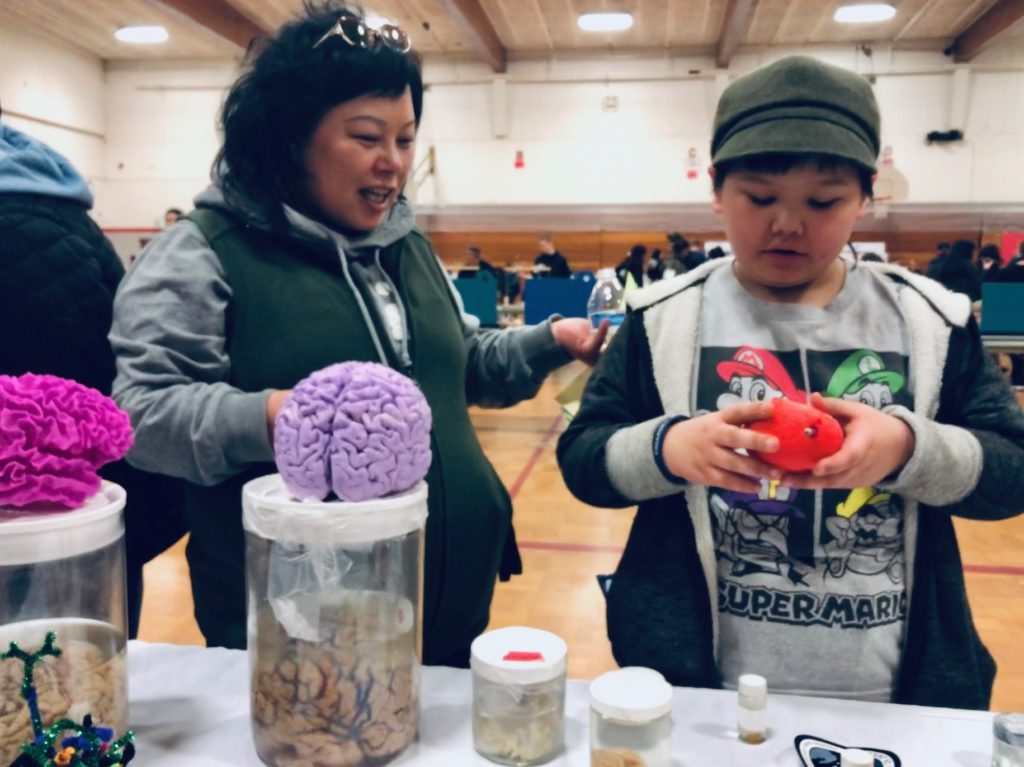
One student was particularly engrossed by the story of Phineas Gage, the unfortunate railroad construction foreman who survived a grisly 19th century accident – a gunpowder tamping rod shot through his pre-frontal cortex! After the injury, Gage “was no longer Gage.”

3D print of Phineas Gage’s skull, with rod (pencil) shooting through his frontal lobe…
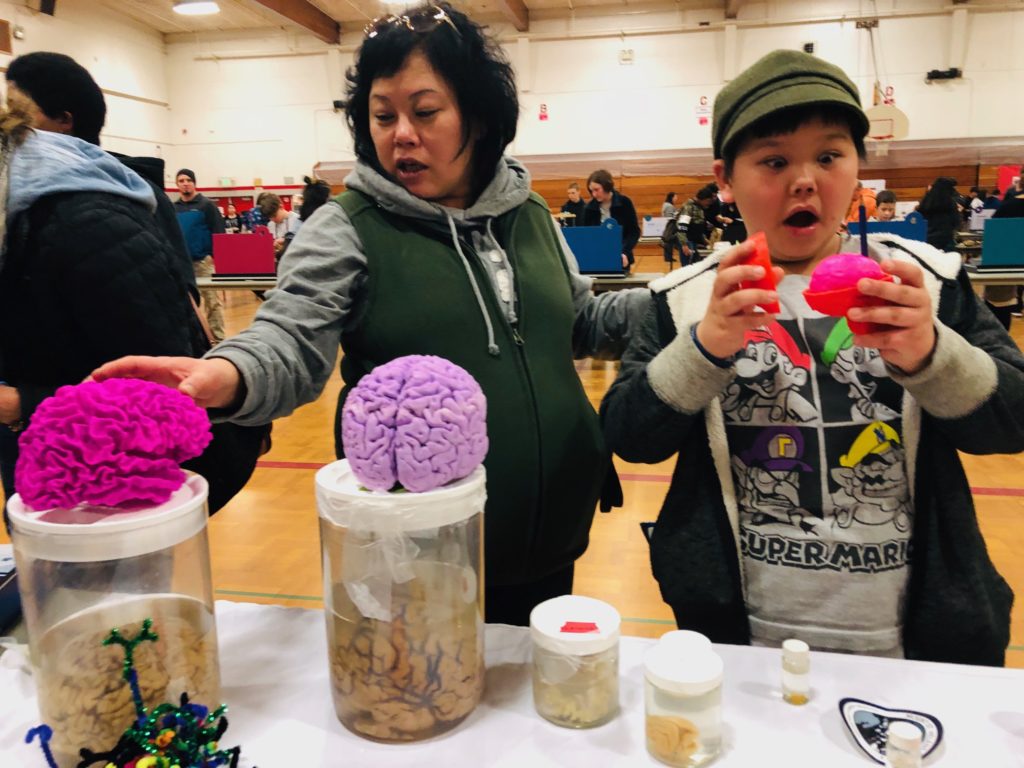
“Wait – WHAT happened to Phineas Gage?!”
LEARN MORE: What Really Happened to Phineas Gage?
Gage’s personality apparently changed dramatically, at least initially, and he had trouble organizing activities. He was impulsive, failing to inhibit inappropriate social behaviors. Some accounts suggest that his social abilities eventually improved, over time…

Gage’s damaged networks, in the frontal lobes, are currently undergoing dramatic change in these middle school students as they learn to effectively navigate a complex, changing world…
LEARN MORE: The Adolescent Brain
LEARN MORE: Development of the social brain in adolescence

The chance to discover, create art and explore absolutely captured the attention of many brains in the Mac gymnasium…

“By far, one of the best experiences of college so far!” -Isidro Chan from PSU
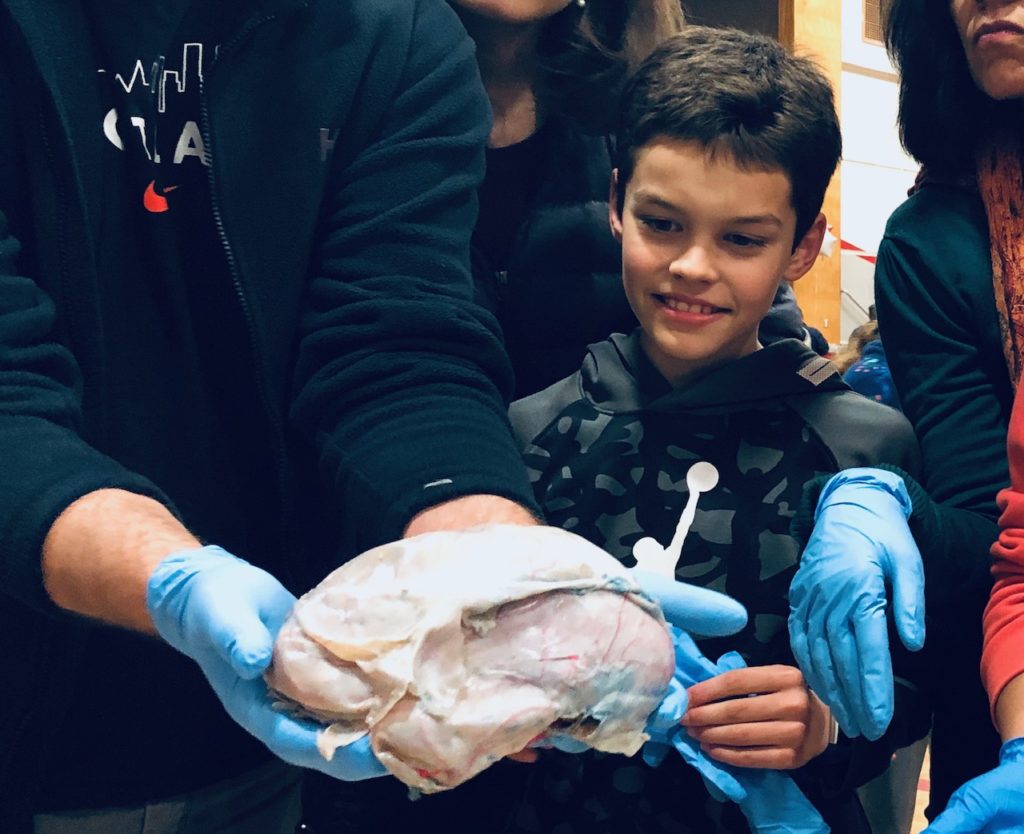
Even those who initially scrunched noses and swore they’d never touch one – ever – were drawn back, eager to challenge themselves to touch a brain and learn more about the world inside their heads.
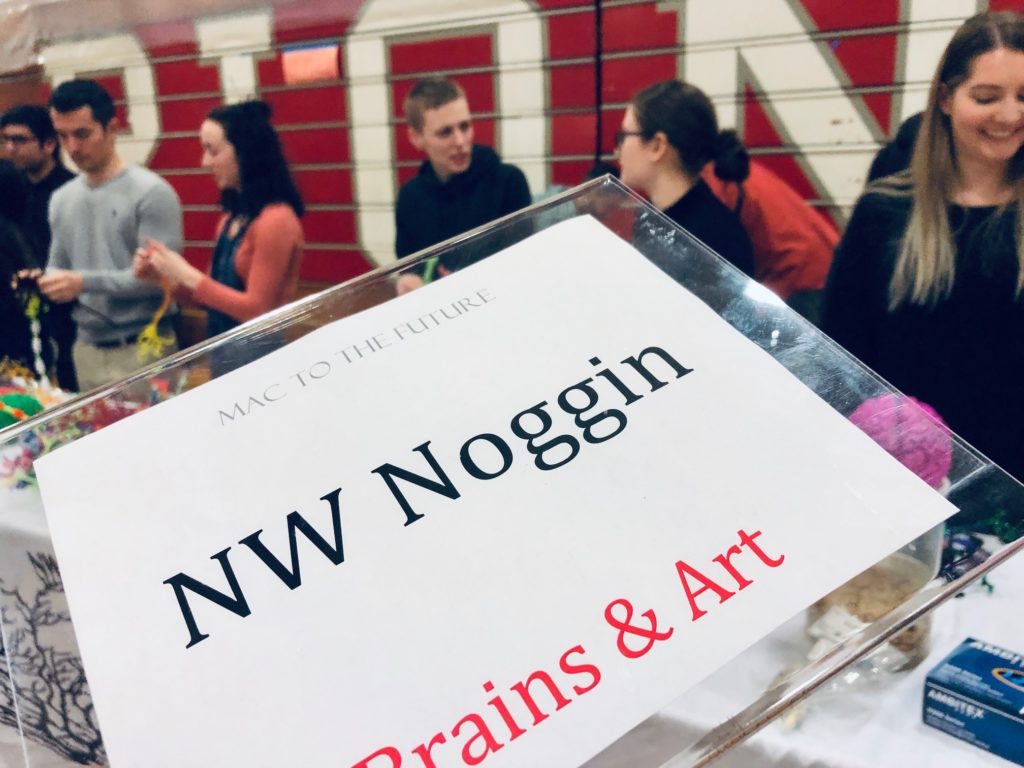
A great night of outreach, education, storytelling, brain research and art!

Our thanks to Tricia Goode and the students, families, teachers and staff at McLoughlin Middle School for welcoming us to Science Night at the Mac!


